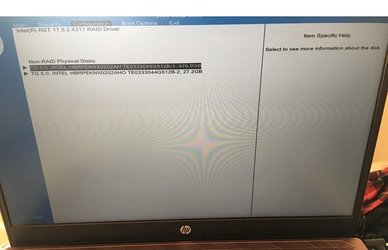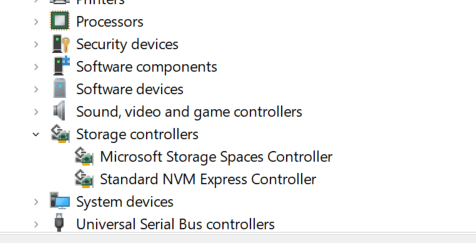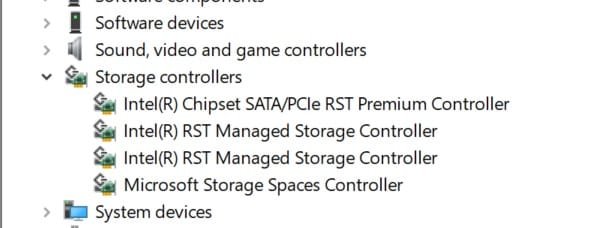Nothing that anyone is talking about - drivers, secure boot on/off, AHCI v. Raid, Intel VMD enabled/disabled, IRST drivers, UEFI v. CSM - will affect whether the physical drive is shown as connected in the BIOS. Those would only affect if and how Windows would recognize/interface with the drive. The possibilities for the drive not showing up on the drives list in BIOS:
- Corrupt BIOS - not likely since it works with the Intel Optane (assuming H20) SSD installed
- Motherboard failure - again not likely
- Incorrect installation - was the NVMe inserted all the way into the slot? Was the hold down screw installed? Probably installed correctly - if the hold down screw was installed and not cocked.
- Incompatible SSD - Hewlett Packard used to have hotlists embedded in their BIOS (especially for network cards). Only those components allowed by HP would be recognized by the BIOS. There used to be BIOS hacks available to disable their hotlists. I think HP dropped this practice years ago. You can download the service manual for your specific computer from HP and see if it mentions something like that. You can also see the SSD options available from HP for that computer.
- Finally, defective SSD - I had two brand new SSDs (both ADATA brand) that behaved the same way in my Asus motherboard. Sometimes the computer would boot from them, sometimes not. I then discovered when they did not boot, they were not recognized and on the list of drives in BIOS. The third replacement I ordered was a Samsung and had zero problems with it.
The plan to get an NVMe to USB enclosure is a good one, it will allow you to use the removed SSD, and it will also allow you to test the new SSD, if you don't have another computer to install it in to test it.











